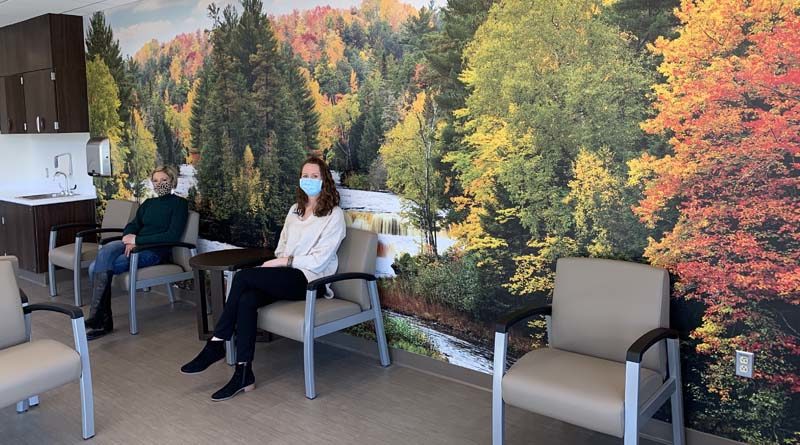How Experiential Graphics Can Transform Clinical Settings to Healing Spaces
By Greg Schwartz
How influential are our surroundings to our wellness, especially at those times in life that produce trauma and anxiety? How about for those who work in a high-stress field, like healthcare? Turns out, the environment matters a lot.
When well-designed, expertly crafted and carefully installed, experiential graphics, art and signage can build a narrative of care and well-being plus have a nurturing effect on patients, families, care givers and staff.
From small clinics to massive hospital campuses, “healing spaces” that have made the shift to a more holistic design approach are finding a host of beneficial results. Multiple studies have shown that for patients, shortened hospital stays, faster recoveries and less pain are some of the improved outcomes. While for the organization, enhanced employee recruitment and retention, increased job satisfaction and productivity all contribute to combatting the high cost of turnover.
Here are five things to consider, whether you are looking to make a few design changes or wide-reaching upgrades to your medical facility’s public interior spaces:
- Help to find the way. When timely arrivals and check-ins are key to efficiencies, clarity in wayfinding signage and imagery is a necessity for moving foot traffic from point A to point B and beyond. Being hurried or disoriented is counterproductive to a wellness visit for people who are already feeling a loss of control, stressed and vulnerable.
- Add comfort to the wait. Soothing colors go a long way toward overcoming the age-old perception of cold, clinical waiting areas with nondescript tones and harsh lighting. Inspire with artwork that adds visual stimulation and inform with clear signage that is installed for maximum visibility and comprehension.
- Pay attention to surfaces. Consider the human senses as you evaluate surfaces and materials. Add texture to areas that will be touched infrequently, like lobby walls and in atriums. Choose smooth, easy-to-clean, nonporous surfaces for counters and tabletops. When you are unable to do a complete overhaul, plan for pockets of visual interest to personalize your public spaces that are both thoughtful and functional.
- Go natural. Studies confirm that connecting with nature offers therapeutic value and can influence patients’ emotional and physical comfort. Modifications that increase exposure to living plants or garden displays that take advantage of natural light and coordinate with complementary graphical elements create an environment that relieves anxiety.
- Find the right partner. Foundational to delivering quality healthcare is trust. In settings that are unfamiliar and intimidating to visitors, the more successful you are in crafting a welcoming environment the more likely you are to encourage positive interactions between healthcare providers and your patient population. Seek a trusted, experienced graphics partner with a strong portfolio of work that showcases design skills, manufacturing capabilities and installation expertise to relieve you of the stress often associated with building remodels.
Greg Schwartz oversees operations of Image360 in Plymouth, Mich. He was a founding member of Progressive Art and Frame Design, providing first-in-class artwork, display consultation and fulfillment solutions to corporate and healthcare clientele. He was instrumental in the diversification and expansion of the company’s product offerings and design-driven growth strategy and had oversight of the company’s major client relationships including University of Michigan Health System, Beaumont Health System, Oakwood Health and others.

